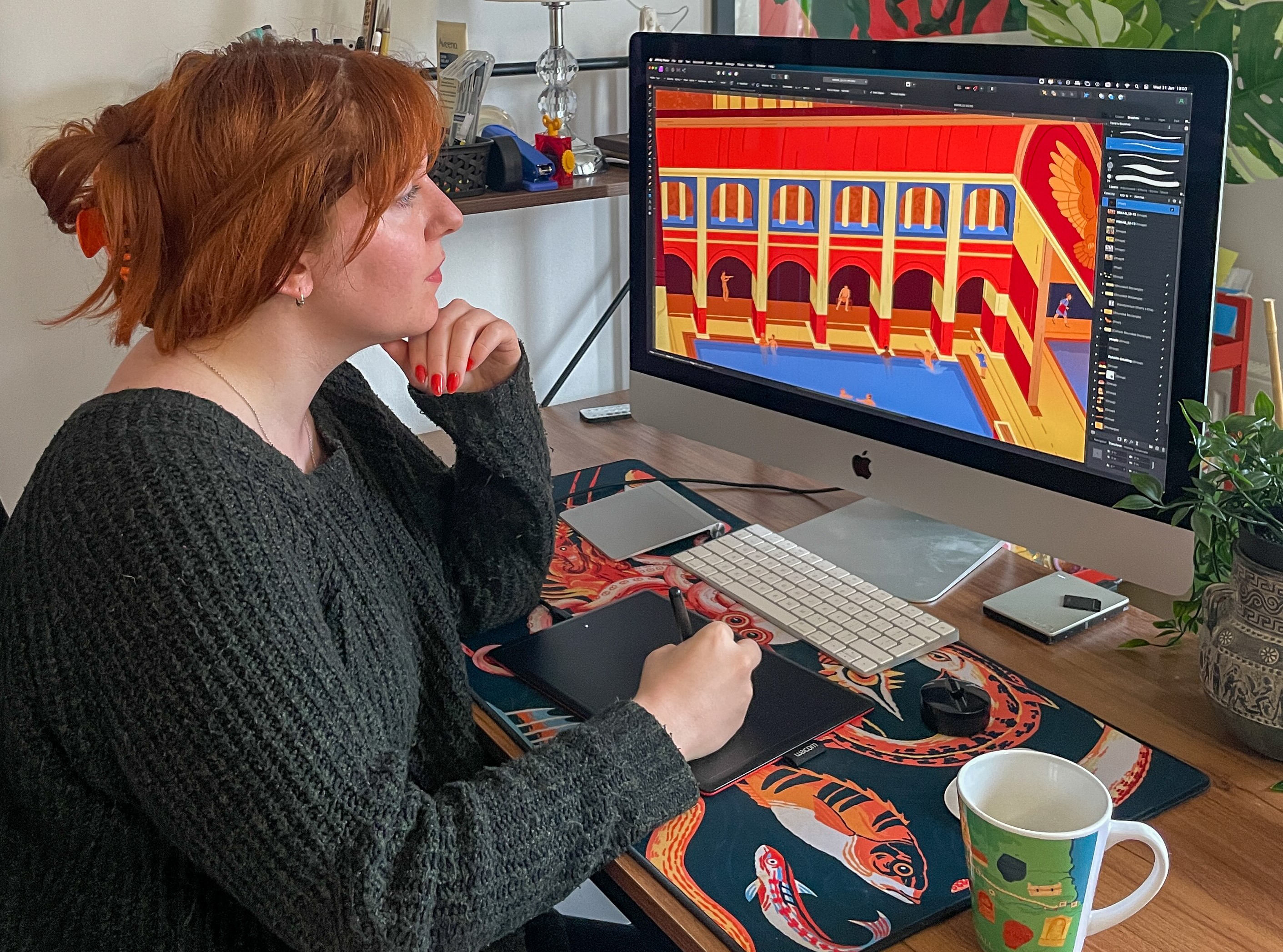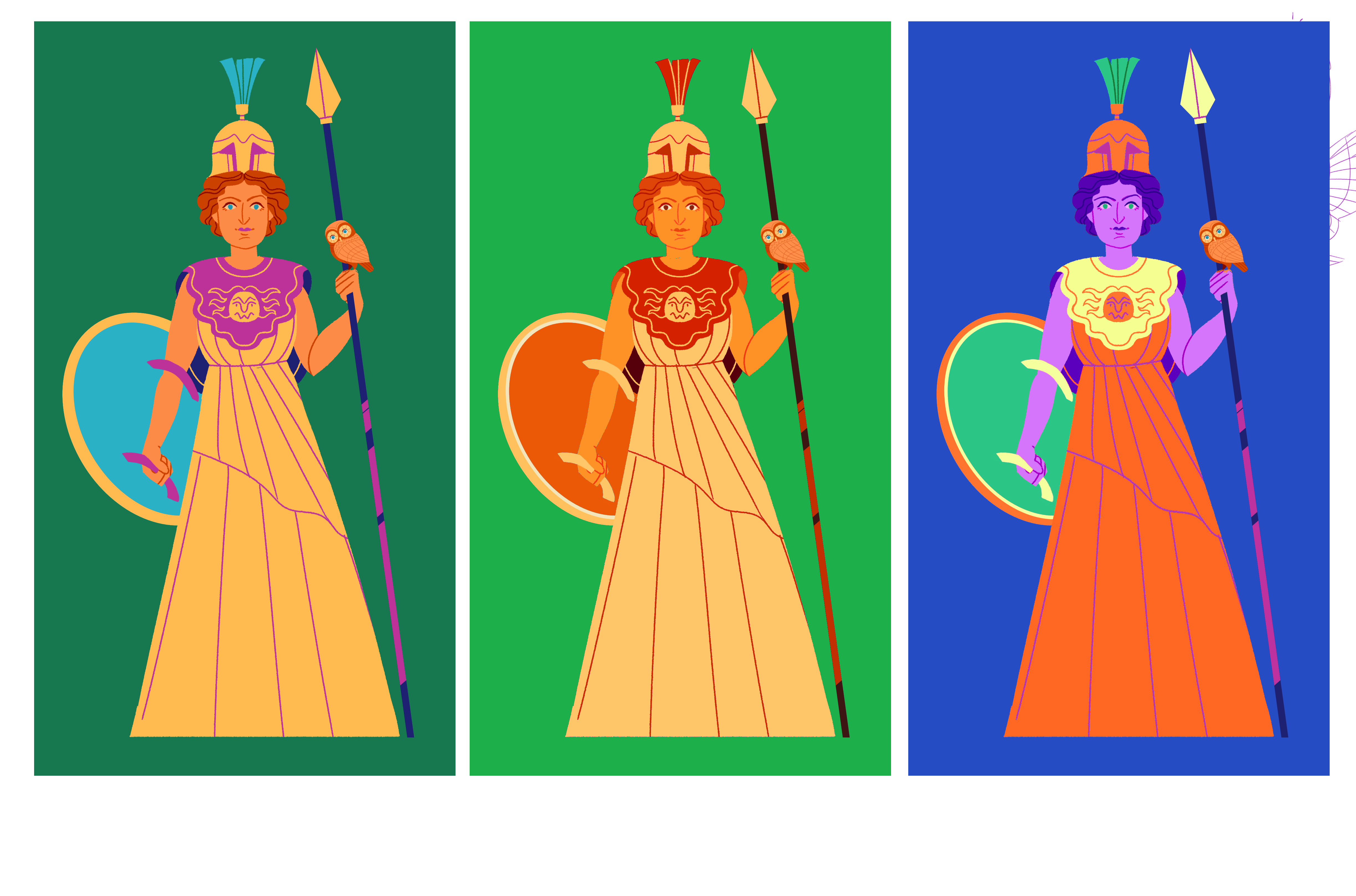
This month, we’re delighted to launch our brand-new children’s activity book about The Roman Baths, available to buy from the gift shop. It's packed with stories, games, stickers, and beautiful pictures by illustrator Flora Kirk.
Flora is a freelance illustrator specialising in visual depictions of the ancient Mediterranean world. She loves to create art inspired by archaeology sites, ancient myths, and visuals that echo the aesthetics of a time long past. We talked to Flora about her work on this project, and what it was like to bring the Roman Baths to life on the page
Hi Flora, what did you enjoy most about creating the new Roman Baths activity guide?
My favourite part about this project was being able to work with the Roman Baths Team. Having knowledgeable points of contact on site is so valuable for projects like these where you're trying to authentically recreate an ancient world. The team were kind enough to share their resources and check in when I had questions about how the site was laid out and what would (and wouldn't) have been seen during each era. Normally I am only working with books and articles and scouring google for reference photos, so this made researching a breeze!
What's your process for getting to work on a project like this?
Each project has its own requirements, and this is definitely the biggest project I've completed to date. First, I was invited down to the Roman Baths Museum to meet the team and view the site. During this visit I was able to familiarise myself with the landscape of Bath, and the layout of the Baths themselves, as well as take notes on inspiring artefacts, character histories, and even natural colour palettes.
I then returned to my studio and began working on initial character concepts and colour schemes to submit to the team so we could establish a uniform aesthetic for the book. The greens and oranges were drawn directly from the vibrant hues of the spring, and the accompanying accent colours were developed to complement this palette.
Once these were approved, I created rough sketches for each page following the brief, which were submitted to the team and then the publisher. Once the layouts were approved I then created the full-colour artworks for final approval, and the team and publisher handled all the text.

Have you visited The Roman Baths? What do you find inspiring about this place?
I was lucky enough to complete a six-week summer placement with The Roman Baths in 2015 during my undergraduate degree in Roman Art and Archaeology, so I have been able to familiarise myself with the site well. Though the site is different than it was in Roman times, you can still find yourself transported to the past based on the atmosphere alone.
The size of the Great Bath, with the active spring and water still steaming, allows you to see it as it once was. Similarly, the enclosed tepidarium makes you feel like you've stepped into another world. I also love the amount that we know about the people who lived in Aqua Sulis, and how we've found their tablets and offerings in the spring.
Tell us something you find particularly fascinating about Roman Bath...
My favourite part was being able to learn about the Baths' site pre- and post-Roman times, and how it changed over the millennia! I especially loved researching and then illustrating the pre-Roman landscape around the spring. Unlike the Romans, who lived in enclosed cities, the Britons had small holdings and round-houses and lived closer to the natural world. I wonder what aspects of their culture would have been assimilated by the invading Romans.
Why did you decide to specialise in this area of illustration?
During my placement experience at the Roman Baths I worked with the Beau Street Hoard, a collection of 17,000 Roman coins found in Bath a few years before. The coins had hundreds of different images, all chosen by the emperor at the time of each coin's production, to share a specific message about his reign.
I pursued this theme in my later research, examining messages and artefacts left by people of the past, and their stories. As archaeology progresses, we are able to learn more about the "everyday people" who lived in these ancient sites, and I find that more interesting than a lot of the emperors.
I have always been a visual learner, and believe that visual representations of the past are powerful learning tools. Subsequently, I've wanted to make art of the past with an emphasis on authentic reconstruction, that focuses on the everyday life of people in these periods.
What do you hope children will get out of this book?
I hope the vivid colours, fun characters, and fascinating facts of the book will help young readers fall in love with the history of the Baths! We've worked really hard to make it an accurate depiction of Roman Bath, and to show that while the Romans were an ancient culture, they weren't entirely so different from you and me. They had a lot of colour in their lives, on buildings and statues, and they enjoyed imported foods and watching visual entertainment like the theatre.
We also made sure to show the cosmopolitan nature of Roman Britain, especially the Baths which were a hub for traders and legions from all over the empire. A lot of us were raised on illustrated Roman history books showing only Western Europeans, surrounded by gleaming, unpainted marble buildings and statues, and that simply wasn't the case!
The Roman Baths Activity Guide is available to buy now from the Roman Baths Giftshop for £5.
You can find out more about Flora on her website






